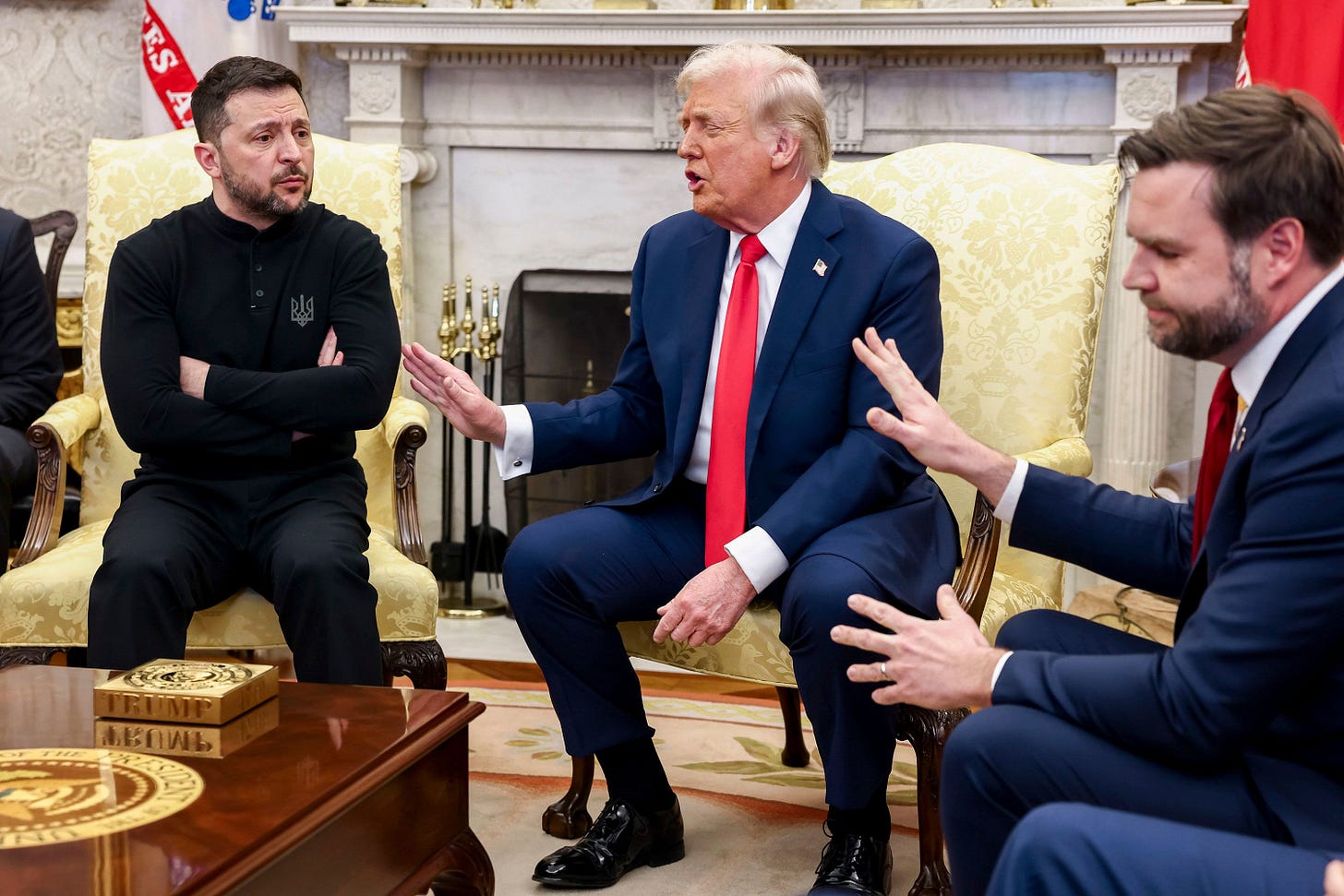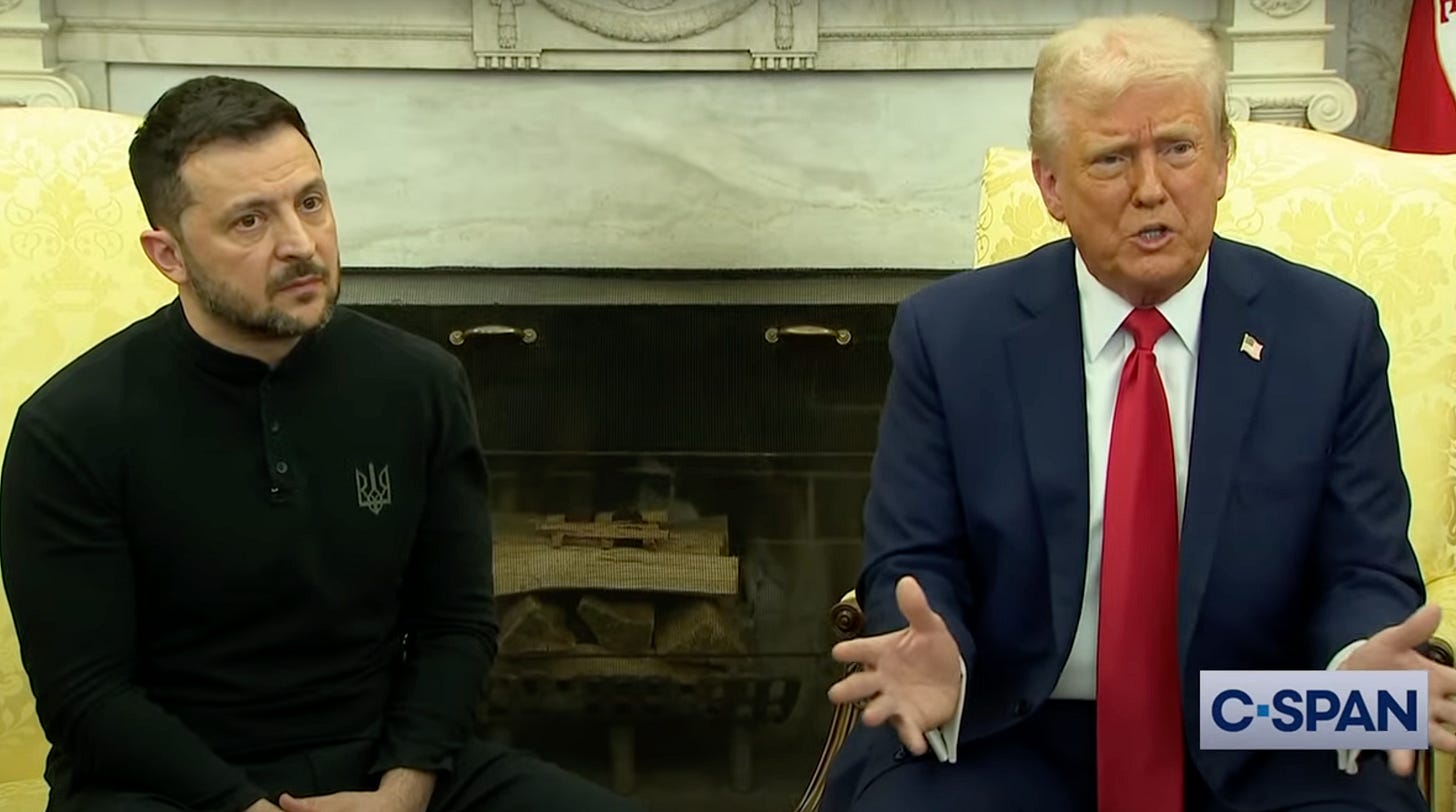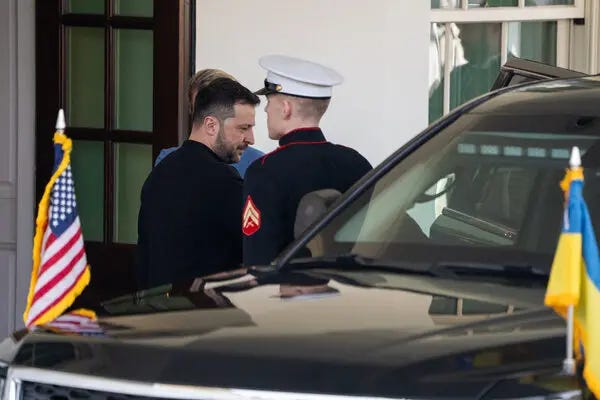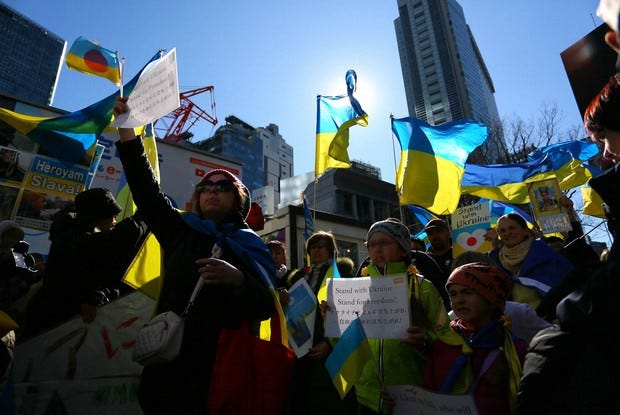Bonus Perspectives: Zelenskyy vs. Trump, How Japan Helps Ukraine, "The Brutalist," and "Limbo"
Zelenskyy's visit to the White House ends in disaster, Japan's unsung role with aiding Ukraine, and your weekly media recommendations.
Bonus Perspectives is a weekly column series containing my thoughts on the latest international news and Japanese news, as well as film, television, music, book, and video game recommendations. It’s free for all subscribers to this Substack, but if you enjoy my writing, consider opting for a paid subscription. Doing so will give you access to exclusive in-depth pieces and my entire backlog of work. Your support is greatly appreciated!
Why Zelenskyy’s summit with Trump failed
Few could have predicted how much of a total dumpster fire Ukrainian President Volodymyr Zelenskyy’s summit with U.S. President Donald Trump ended up being last Friday. What was supposed to be a straightforward signing of a rare earth minerals deal became one of the most explosive spats ever seen at the White House. The whole 50-minute press conference is available on YouTube via C-SPAN and through it we can see in real time how everything fell apart.
Most of the initial discussion between Zelenskyy and Trump around ending the war in Ukraine was cordial enough. There was even a moment early on when both leaders respectfully disagreed about the amount of EU funding, but it did not derail things and the conversation continued. That all went to hell at around the 40 minute mark when Vice President JD Vance began sparring with Zelenskyy over what shape potential diplomacy with Russia should take. Trump soon interjected and the whole thing quickly devolved into a meltdown that will probably be replayed for decades to come. The full transcript of the argument is here and I recommend reading it for full context, but the ultimate result was a complete breakdown in relations between Washington and Kyiv.

Zelenskyy accurately pointed out to Vance that Russian President Vladimir Putin repeatedly violated previous ceasefires, likely in reference to the Minsk agreements. Instead of acknowledging this, however, Vance instead stressed, “diplomacy that’s going to end the destruction of [Ukraine] while chiding Zelenskyy for “litigat[ing] this in front of the American media.” The vice president continued his barrage and hardly gave the Ukrainian president (who speaks English as a second language) time to respond. Incredibly, Vance later even asked “Have you said thank you once?” which Zelenskyy in fact did both during the same day of the meeting and repeatedly over the last few years.
Trump finally chimed in after Zelenskyy alluded that the United States would “feel it in the future” in reference to the war being resolved in Putin’s favor. That was apparently the last straw for the U.S. president. He angrily responded, “Don’t tell us how to feel” and proceeded to declare that Ukraine is “gambling with World War III.” That exchange is what grabbed the most headlines, but I think Trump’s response to a reporter’s question asking what would happen if Putin broke another ceasefire agreement is being overlooked. It’s utterly incomprehensible rant that brought the entire meeting to a close and Zelenskyy’s exasperated look throughout the whole thing says it all.
In the end, Zelenskyy and his entourage were ordered to leave the White House early, lunch was cancelled, and the minerals deal between both countries was left unsigned. Later in the evening, Zelenskyy sat down for a lengthy interview with Fox News. It was more or less an effort at salvaging a terrible situation and to the Ukrainian president’s credit, he did as well as could be expected given the circumstances. Bret Baier was a good host who did not interrupt, while Zelenskyy reaffirmed his gratitude toward the United States and express his hopes for a return to negotiations. Trump took to his social media platform Truth Social, criticizing Ukraine’s president for having “disrespected the United States of America in its cherished Oval Office,” and want on to say that he can “come back when he is ready for Peace.”
And that essentially brings us to where we are now — a very tense time with an unclear future ahead. First, I should unequivocally state that Trump and Vance acted completely beyond the pale for treating Zelenskyy the way they did. While I guarantee that world leaders have hated disputes with one another all the time and indeed even Biden is reported to have lost his temper with Zelenskyy in the past, the difference is that all those exchanges were in private. To turn this into a public media circus speaks very poorly on Trump and Vance’s part because they are the ones who come across as unhinged, not Zelenskyy. Putin was probably in stitches after watching the whole thing.

For as unacceptable as Trump and Vance’s behavior was, however, I will take a somewhat unpopular viewpoint which is that Zelenskyy miscalculated. Not because he was morally or factually wrong. On the contrary, everything he said about Russia breaking its promises was true. His mistake was not saving his concerns until after the cameras had stopped rolling and both sides were behind closed doors in confidence. The front-facing portion of the summit was supposed to be a photo op with handshakes and smiles, not a grilling of the details. It’s a sad reality of current U.S. geopolitics, but one cannot air out significant disagreements with Trump in public without incurring his egotistical wrath. Like it or not, that’s the biggest reason why I think Zelenskyy failed.
Recall back to 2019 when Trump held his second summit with North Korean leader Kim Jong Un and the two men were all grins for the press. Negotiations did break down afterward and Trump left without a deal being reached around denuclearization, but there was notably no public spat with Kim in Hanoi. Many will cynically chalk that up to Trump being friendly with dictators, which perhaps has some truth to it. Yet just two years previously both sides were trading vicious insults with each other and threatening war. Knowing how much was at stake, Kim knew to be diplomatic with Trump for the cameras but blunt about his goals behind the scenes. While no agreement happened, America kept its dignity by calmly walking away and North Korea did not lose face either.
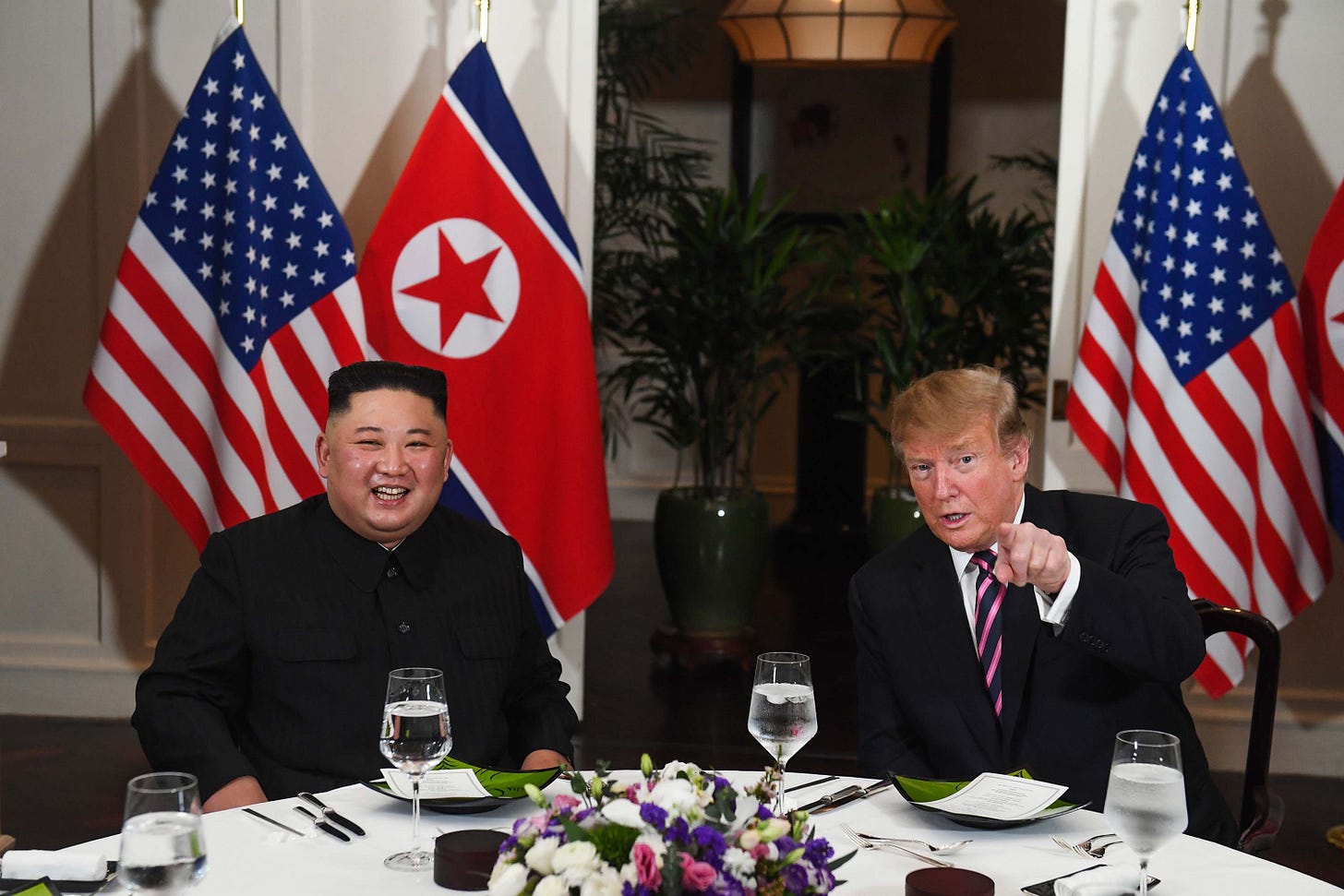
Or take Japan as another example. In a recent column, I wrote about the numerous ideological differences Prime Minister Shigeru Ishiba has with Trump. There is a ton that both men disagree on, but Ishiba’s recent summit at the White House ended on good terms with enough ground to establish a professional working relationship moving forward. Japan is obviously not in an existential war for its survival, but getting what it wants with things like avoiding new tariffs and maintaining the U.S. security alliance requires buttering Trump up. This does not mean Ishiba has avoided future disputes with Washington, but the difference between how his meeting went compared to Zelenskyy’s could not be starker.
Let me be clear — nothing Zelenskyy said was wrong. Trump’s behavior last week marked one of the few times in my life where I’ve been ashamed to be an American and it sends a very concerning message to our allies. Yet if the past decade of U.S. politics has proven anything, it’s that someone being correct has zero impact on how Trump operates. I do not like that the president makes foreign policy decisions like he’s Vito Corleone, but that’s his nature. World leaders are going to have to seriously learn the lessons from his first term if they are to survive negotiations with him throughout his second.
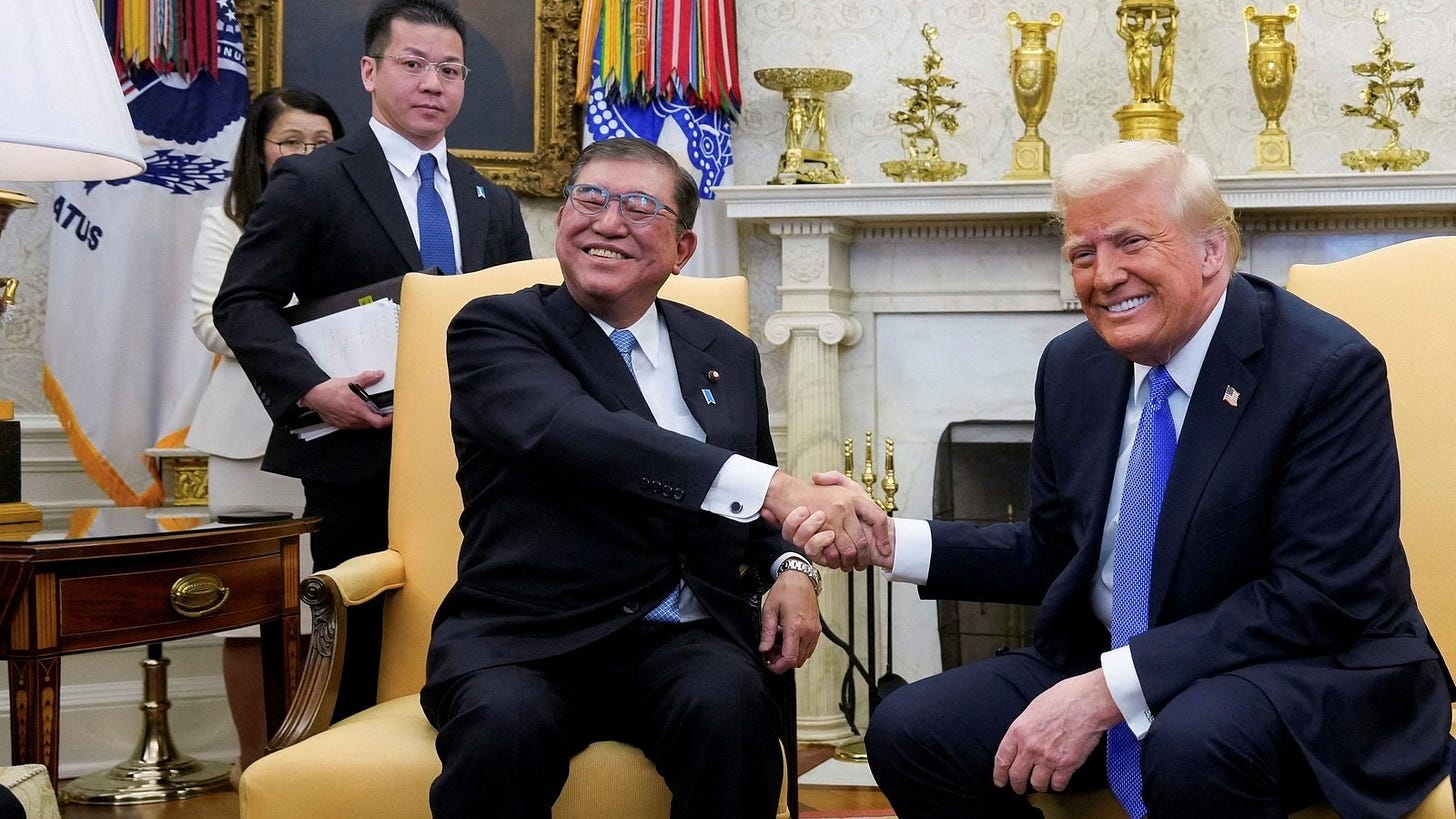
Some are suggesting that Trump and Vance planned for this to happen and that the end result was always going to be Zelenskyy being treated how he was. I believe that this is only half-true. All the evidence points to both sides fully expecting to sign the minerals deal before the summit began. Remember, it was Trump who forced Zelenskyy to exit the White House before the agreement was ever signed. The Ukrainian president did not leave of his own accord and was in fact told to leave. That does not sound like a pre-planned event and was most likely the result of legitimate frustration toward Zelenskyy after their argument ensued.
For as grim as things currently look though, I still largely stand by what I wrote last month that Ukraine will survive as a sovereign country. Despite everything that happened during the White House summit, I do believe that Washington ultimately does not want Russia to take over Ukraine. The current dispute is over what Ukraine is willing to concede in order for a ceasefire to occur, while the Ukrainians themselves are after lasting security guarantees. These are all issues that should have been discussed behind closed doors instead of in public, but all parties involved are going to have to make concessions either way.
What will happen next depends on when Trump cools down and resumes talks with Zelenskyy. Just a few days before their summit, he seemingly walked back on calling the Ukrainian president a dictator, which is just one of the many examples of his mood quickly changing. Despite their previously stated support of Ukraine, it should also not come as a surprise that everyone in his cabinet from Vance to Secretary of State Marco Rubio stands by whatever Trump says no matter what. That’s simply how U.S. politics in this day and age works. Trump and Zelenskyy are bound to meet again eventually, but one thing is for certain — what just happened won’t be easily forgotten by either side.
Update: It just goes to show how quickly analysis of the war in Ukraine can get outdated. Shortly after I wrote this section, Zelenskyy took to social media and referred to last week’s White House summit as “regrettable.” He appears to be changing his tone with being more open to concessions, but what likely happened was that he needed to act fast after the Trump administration abruptly paused military aid to Ukraine earlier this week. I think it’s quite likely that both sides will come back to the negotiating table sooner, rather than later. Stay tuned for further thoughts in later columns as new developments happen.
Japan is staying out of the Zelenskyy vs. Trump spat, but it’s still helping Ukraine
Japan’s response to the fallout between the U.S. and Ukraine can best be described as, “Let’s not piss off Trump any further.” Prime Minister Ishiba on Monday stated that Tokyo has “no intention of taking sides” while stressing continued cooperation between G7 nations. Is this somewhat of a spineless wishy-washy response? Yes, but I could not imagine even someone like the late Shinzo Abe saying anything different either. As I’ve already mentioned, Tokyo is on thin ice with the current administration in Washington. The last thing Ishiba wants is to incur Trump’s wrath and be subject to new tariffs.
That isn’t to say Japan is staying neutral on the war in Ukraine itself. Since 2022, Tokyo has been a stalwart ally of Kyiv and what it has done over the last three years is a topic that doesn’t get nearly enough global attention. The Japanese Foreign Ministry reported last year that the country has provided over $12 billion USD in financial, humanitarian, and other miscellaneous aid. That’s obviously much less than the roughly $120 billion the U.S. has contributed, but one needs to keep in mind the limited role the country can play.
Japan is the only G7 member that cannot provide lethal aid to Ukraine because of limitations on military powers put in place by Article 9 of the Constitution. I’ve discussed in other columns how politicians like Abe have tried to push for constitutional revisionism. Lawmakers attempt to skirt around these restrictions by framing aid as helping allies being subjugated to violations of international law, but this can only go so far. The best Japan has been able to do is sending Ukraine non-lethal aid like helmets and kevlar vests as well as medical supplies. Actual weapons or military vehicles, however, are still off the table.

Outside of humanitarian aid, one notable development is Japan’s hosting of Ukrainian refugees or “evacuees” as the government officially refers to them. Over 2,700 Ukrainians have been accepted by the Japanese government since 2022 and about 2,000 still remain. Again, quite paltry numbers compared to Western countries, but those figures need to be contextualized. Japan has historically been very reluctant to accept refugees and given how poorly most of Western Europe has dealt with issues around integration over the last decade, that sentiment is not unwarranted. The Japanese government sticking its neck out for Ukraine is arguably an unprecedented move of solidarity toward the people of a single country.
It should be noted, however, that most Ukrainian evacuees do not expect to stay in Japan for the rest of their lives. There is a recent surge in Ukrainians expressing interest in permanent settlement, but the majority still hope to return to their native homeland and be united with separated relatives. These people face an incredibly difficult choice between being fully committing themselves to a long-term future in Japan or holding out for the situation in Ukraine to improve, which is of course entirely dependent on what conditions a potential ceasefire would bring.
Either way, there is a very low risk of Ukrainian residents causing trouble for the people of Japan and both countries maintain a close relationship which goes back to the immediate end of the Cold War. Japanese companies have long operated in Ukraine, while the soft power of anime, video games, and J-pop is a big hit with the nation’s youth. Due to the decades-long Northern Territories dispute, Japan is fully aware of how Russia negotiates and takes future encroachment from Moscow very seriously. Choosing to side with the Western world, Japan currently places heavy sanctions on Russia.
Japan-Russia relations are unsurprisingly at an all-time low now. Ishiba recently pledged to resolve his country’s territorial disputes with Putin, but this is incredibly unlikely to happen anytime soon. While not as much of a foreign policy hardliner as predecessors Abe and Fumio Kishida, the current prime minister will have to continue a stringent tone on Russia if he is to maintain confidence both domestically and with Japan’s G7 allies. Despite the limitations that exist, Japan has gone above what anyone could have expected with assistance to Ukraine. Ishiba only has to maintain the same continuity moving forward.
What I’m watching — The Brutalist is a miracle film
The Brutalist is a film I was looking forward to ever since I first heard about it in September of last year and it’s now finally out in Japanese cinemas. I had the opportunity to see it in IMAX last month, which I’m very grateful for. This is the kind of sprawling epic that deserves to be seen on a huge screen in order to soak in all the visual splendor. The real question is if the average viewer will have the patience to do so.
In our 24/7 connected world of bite-sized social media posts and smartphone addiction destroying what little attention span we still have, sitting patiently in a cinema for over 3 1/2 hours seems like an impossible ask for most audiences. Yet director Brady Corbet is taking the risk to demand that you do sit down and pay attention to his ambitious project. The first scene of The Brutalist instantly reminded me of films like The Godfather and Once Upon a Time in America, very long epics spanning many years which were once commonplace in Hollywood.
This is a work that by all accounts should not exist in the current landscape of mid-2020s cinema. Its staggering runtime complete with a 15-minute intermission included is reminiscent of when films like Gone with the Wind and Lawrence of Arabia were treated as an event akin to a stage play or opera. It was shot on the long defunct VistaVision format which has not been widely used for a feature film since the 1960s. Despite its huge scale, it had a budget of less than $10 million. Brady Corbet is also quite young by modern Hollywood standards at 36, having previously debuted as a director at 27 with his well-received The Childhood of a Leader.
Do we finally have another Orson Welles or Stanley Kubrick on our hands? It’s too early to say, but what is clear is that Corbet is an ambitious artist trying to revive production practices and creative techniques which have long been discarded. Some will inevitably call the The Brutalist “pretentious” and perhaps it is at times, but at this moment we could use far more old-fashioned Hollywood pretentiousness as an antidote to the creative stagnation that has dominated the industry for far too long.

In a performance that rightfully nabbed him the Academy Award for Best Actor, Adrien Brody is László Tóth, a Hungarian-Jew who moves to the U.S. after surviving the Holocaust. It’s ostensibly a classic story of an immigrant after the American Dream, but Corbet smartly avoids the cliches we’ve seen before and doesn’t insult the audience’s intelligence with sentimentalism. The Brutalist paints a nuanced portrait of what it was like for a post-WWII generation of Europeans to adapt to American life, while the flaws of its protagonist are on full display. There is also a fascinating thematic layer exploring what sacrifices are necessary to create epoch-defining art. Corbet leaves the viewer with a lot to chew on after the credits are over and I anticipate that The Brutalist will be discussed for many decades.
With that said, a few quibbles prevent The Brutalist from being a perfect film. Its first half is a masterful setup for the trials and tribulations of our characters, but the story falters somewhat after the intermission. Despite its length, ironically I think more time could have been spent on developing László’s declining mental and physical health, as well as the deteriorating relationship with his family. All of it comes rather too quickly as the story jumps forward several years. Without spoilers, the final twist of what a certain character did to László was also somewhat confusing. I might pick up on more subtleties upon a rewatch, but to me it was quite unclear what initially happened to him.
Finally, there is the overblown AI controversy to address. Reports initially surfaced that artificial intelligence was used to render some buildings in the final sequence, but Corbet has flatly denied this. What is true is that Adrien Brody and Felicity Jones’ delivery of Hungarian dialogue was modified by AI Respeecher technology to add more natural pronunciation. While I am against art having overeliance on AI, a case like this to me seems understandable. Hungarian is one of the hardest languages to speak even phonetically and Hollywood films are notoriously terrible with how they depict foreign dialogue. Much of it fails to be convincing or natural. If something like this can provide a tad more realism while the overall performances of actors in their native languages remains unaltered, I think there is little cause for concern. The Brutalist has some issues, but this is not one of them. It was certainly worth dedicating an afternoon watching in full.
What I’m playing — Limbo is one of the best old-school indie games

While indie video games are a dime a dozen today, the golden age for independent development was truly the late 2000s and early 2010s. Those were the days when devs had far less resources at their disposal and far more hurdles had to be overcome. On the other hand, the lack of market oversaturation meant that there was a greater chance for individual titles to stand out. You had the creative throwbacks to retro classics like Super Meat Boy and Fez, while The Binding of Isaac and Hotline Miami presented addicting gameplay that made any budgetary limitations feel nonexistent. In short, being a successful indie dev meant that you had to think outside the box and prioritize innovation over anything else.
Among the titles of that era which have always stood out to me is Limbo from 2010. Despite being released 15 years ago, Playdead’s monochromatic puzzle-platformer remains a haunting experience and one of the best examples of how video games can tell gripping narratives as an interactive medium. Indeed, Limbo works so well because it could only have ever been a video game. Without a single word of dialogue spoken, the puzzle-focused gameplay puts players in the shoes of a nameless boy who journeys through the hellscapes of an unknown setting to find his lost sister.

The game opens with our protagonist waking up in the middle of a gloomy forest. We are just as confused about our surroundings as he is, which adds to the sense of dread and discovery. Gradually, we pick up on the fact that feral children around our age inhabit this place (but no adults ever appear), that there are dangerous hazards which can mercilessly kill in seconds, and at some point there must have been a civilization due to the decaying buildings. Yet we do not know if Limbo takes place in some kind of post-apocalyptic future or, like its title may suggest, the actual realm of limbo which exists between Heaven and Hell.
Limbo provides no clear answers and is very much a Rorschach test for players. Its black and white aesthetics complete with ambient lighting and film grain make it feel like a silent horror movie, but the minimal story is primarily told through the gameplay itself. Missing a jump or putting something in the wrong place will almost always lead to a gruesome end, but the player immediately respawns a short distance away from where they were. That’s standard stuff for video games, but if you subscribe to the belief that the protagonist of Limbo is in a literal state of limbo, then it’s an added narrative layer which shows that death is no exit from this place.
Naturally, I’m sure that some will find all of that pretentious and they won’t click with the gameplay which is admittedly slower paced than most platformers. Not to mention that the game is very short at only a few hours, which raised debates around quantity versus quality when it came out. I think all of that is perfectly fine. Limbo continues to spark endless discussion that has lasted far beyond its original release, which is a testament to its staying power. In terms of legacy, the game has certainly outlasted its contemporaries like Braid or Fez, which became irrelevant after their arrogant creators burned most bridges with their audiences.
Playdead, however, is still around. In 2016 they released Inside, a spiritual successor to Limbo. I’ve admittedly not played it, but will probably do so soon now that I’ve gone through Limbo again. It’s supposed to have very similar themes and it went on to achieve even greater success. As of this writing, they are still working on their third game, a currently unnamed sci-fi title that will shift things into a third-person perspective. Details are scarce, but it’s pretty clear that Playdead takes their time with things and are fully devoted toward providing unique experiences unlike anything else. I’m certainly looking forward to whatever they come up with next.
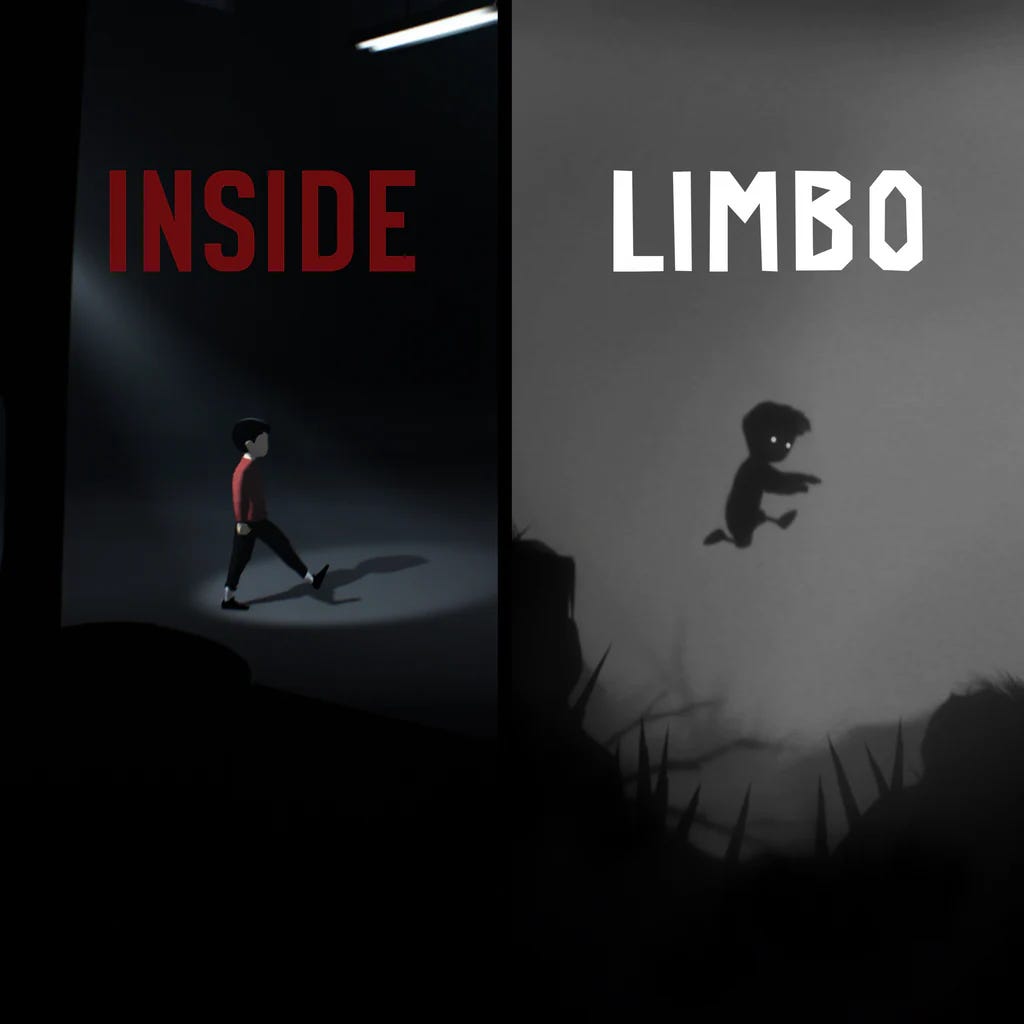
Foreign Perspectives is a reader-supported Substack. If you like my work and have come this far as a new reader or free subscriber, consider opting for a paid subscription so I can continue writing in-depth articles such as these on a regular basis. Your support is greatly appreciated!


